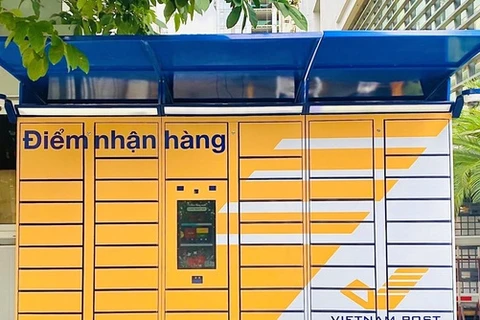Hanoi (VNA) – At least 95 percent of total households in Hanoi are expected to use at least one smartphone by 2025, according to a postal-telecommunications infrastructure development plan serving the city digital transformation programme to 2025 with a vision to 2030.
The plan defines postal infrastructure as an important factor of the digital economy, which contributes to promoting the development of digital government and digital society.
Under the plan, the city targets 100 percent communes having a post office with staff; all households registering digital address; 4G/5G services and smartphones universalised; and fibre optic broadband covering 80 percent of local households and 100 percent of communes.
Meanwhile, 80 percent of local industrial parks, high-tech park and higher education facilities, R&D and innovation centres, schools, State agencies, hospitals and tourism sites are covered by 5G service.
Hanoi aims to unversalise the fibre optic broadband Internet in 2030, along with 5G service.
The city will prioritise the development of high quality broadband telecommunication infrastructure in high-tech parks, concentrated information technology parks, industrial parks, export processing zones, R&D and innovation centres, schools, State agencies, hospitals and tourism sites across the city. Hanoi will also develop free wifi network in all tourist sites across the city.
Besides, the city will speed up activities to promote the universalisation of smartphones, while supporting local residents to access digital transformation process and make full use of digital services.
To this end, the municipal People’s Committee will strengthen communications on digital transformation, while encouraging all economic sectors to engage in building, developing and exploiting postal and telecommunication infrastructure system, and diversifying telecommunication services.
According to the "e-Conomy SEA 2020” report, which is conducted by Google, Temasek and Bain & Company, showed that Vietnam's digital economy reached a total value of 14 billion USD last year, 2 billion USD higher than that of the same period of the previous year.
Out of the total number of digital service users in Vietnam, new users account for 41 percent. This turned Vietnam into a country with the highest rate of new digital service consumers in the region.
Statistics from the General Statistics Office said that Vietnam was one of the three Asian countries with positive growth with the size of the economy is more than 343 billion USD. Singapore reached 337.5 billion USD and Malaysia 336.3. billion USD.
The Vietnamese Government has defined one of the pillars of the digital economy as the telecommunications infrastructure, including both mobile and fixed broadband infrastructure.
The development of broadband infrastructure has paved the way for all other economic sectors to grow within the past two to three years.
The total number of fixed broadband subscribers in Vietnam exceeded 17.2 million, and the total number of mobile broadband subscribers reached nearly 69.5 million by the end of last month, reported the Vietnam Telecommunications Authority.
However, in order to contribute to the realisation of the national digital transformation project by 2030 and further promote the digital economy, telecommunication investment and exploitation activities in Vietnam, it still needs a lot of innovation.
The country will test 5G on a large scale and even with Make- in-Vietnam devices from this year.
A study by the National Institute of Information and Communications Strategy said that the contribution of 5G to the national GDP growth is forecast to reach 7.34 percent by 2025.
The socio-economic development strategies for the 2021-2025 and 2021-2030 periods have repeatedly mentioned digital transformation, telecommunications, digital technology, digital government, and digital skills.
Science, technology, innovation and digital transformation are some of the strategic breakthroughs of the next 10 years to help Vietnam develop and be among the top middle-income countries by 2030 and high-income industrial countries in 2045./.
VNA

























